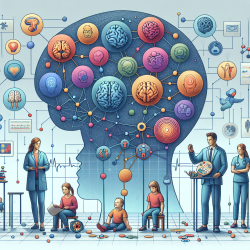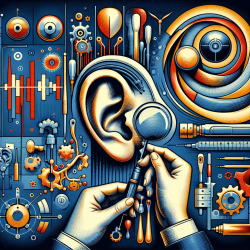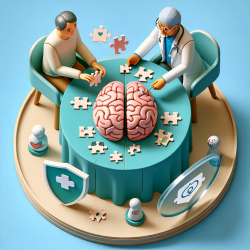Introduction
As practitioners in the field of speech-language pathology, we are continually seeking innovative ways to enhance our therapeutic approaches. The recent study titled Neurophysiological explorations across the spectrum of psychosis, autism, and depression, during wakefulness and sleep: protocol of a prospective case–control transdiagnostic multimodal study (DEMETER) offers valuable insights that can be applied to improve clinical outcomes for children with various neurodevelopmental disorders.
Understanding EEG Microstates
The study highlights the role of EEG microstates in understanding the temporal dynamics of neuronal networks across psychiatric disorders. These microstates, which represent transient periods of stable brain activity, are altered in conditions such as autism spectrum disorder (ASD) and schizophrenia. By analyzing these microstates, practitioners can gain insights into the underlying neurophysiological anomalies that affect sensorimotor integration, speech, and sleep in these populations.
Implications for Speech-Language Pathology
For speech-language pathologists, the findings from this study underscore the importance of a holistic approach to therapy. The study suggests that anomalies in EEG microstates are linked to differences in speech patterns, including prosody and turn-taking. By incorporating EEG analysis into assessment protocols, practitioners can better understand the neurophysiological underpinnings of speech disorders in children with ASD and psychosis.
- Speech Assessment: Incorporating EEG microstate analysis can help identify specific speech anomalies, such as reduced pitch variability and increased pause duration, which are prevalent in autism and psychosis.
- Sensorimotor Integration: Understanding the disruptions in sensorimotor integration can inform therapeutic strategies that address motor planning and execution, crucial for effective speech production.
- Sleep and Cognitive Function: Given the link between sleep disturbances and cognitive impairments, addressing sleep issues can enhance overall therapeutic outcomes.
Encouraging Further Research
The DEMETER study also opens avenues for further research into non-drug interventions, such as light hypnosis, which may modulate EEG microstates and improve therapeutic outcomes. Practitioners are encouraged to explore these interventions and consider participating in collaborative research efforts to expand the evidence base for innovative therapeutic techniques.
Conclusion
Incorporating the insights from the DEMETER study into clinical practice can enhance the effectiveness of speech-language therapy for children with neurodevelopmental disorders. By leveraging data-driven approaches and understanding the neurophysiological basis of speech and sensorimotor integration, practitioners can develop more targeted and effective interventions.
To read the original research paper, please follow this link: Neurophysiological explorations across the spectrum of psychosis, autism, and depression, during wakefulness and sleep: protocol of a prospective case–control transdiagnostic multimodal study (DEMETER).










